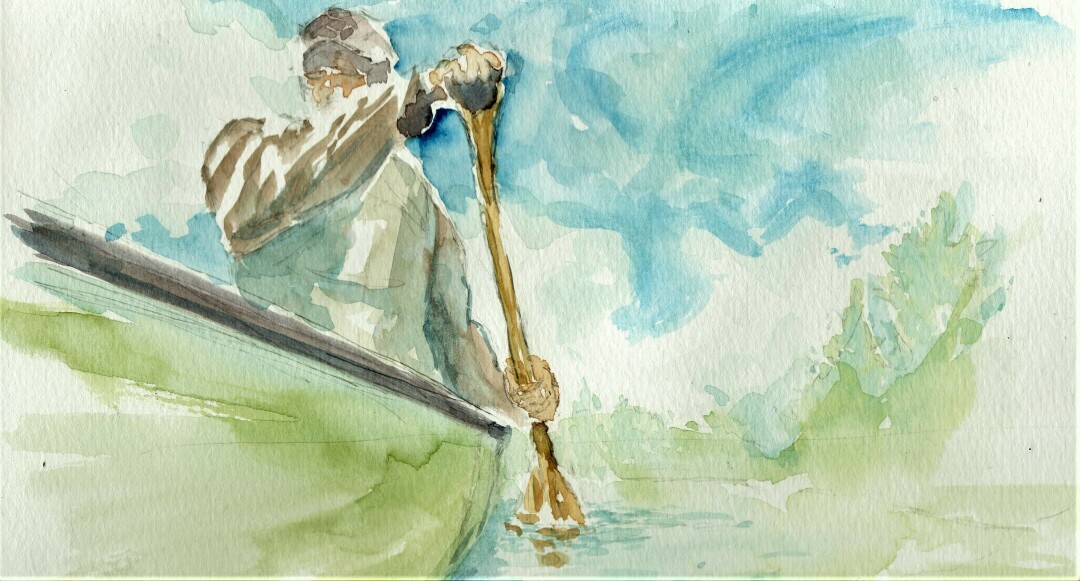Paddling
Cartoonist by Kyle O'Reilly
Cartoonist by Kyle O'Reilly

The distant tree line sharpens and comes into focus as we close the distance between the canoe and shore.
Knife stroke, knife stroke, forward stroke, knife stroke. They’re all correction strokes when you’re crossing a lake, that’s the simple nature of it. We pivot at the waist, keep our heads and shoulders level with the horizon and use our torsos to paddle. As we cut across mirrored glass, my mind wanders.
I think about how sailing is a science and paddling is art. Paddlers don’t calculate Velocity Made Good or analyze data from a chart plotter, it’s just this steady cadence set to the beat of a distant drum, the automatic motion of the wrist that guides the boat. Knife stroke, forward stroke, draw stroke blending into knife stroke.
I could do this all day.
In ‘09, Dad and I paddled 260 miles from I-falls to Lake Superior. Some days, we covered more than 30 miles. After a while the strokes of the paddle seemed effortless, as simple as walking to the mailbox.
Pounding through whitecaps into a headwind was nothing more than walking up a flight of stairs. At the end of the day, our muscles didn’t feel sore, but taut. We felt lean and limber, our senses keen after a couple weeks of steady travel.
Knife stroke, knife stroke, forward stroke...Mindless mindfulness, like breathing.
Lots of people use the term “J stroke,” but I prefer to call it a “knife stroke.”
You rarely finish off the hook of the “J” unless you’re in current or making a tight turn. In reality, most of the time we’re probably executing a “rolling pitch,” but I guess that’s just semantics.
I like the thought of my paddle slicing through the water, so it’s a “knife stroke” to me.
The shoreline is close now. Sitting on it’s reflection, it looks like a gently morphing Rorschach test.
We carve East toward the portage, and I think back to sunny days in a kayak, suited in a dry top and helmet, nose plugs dangling from my chin strap.
Sometimes I miss the pull of whitewater, where navigation is more of a matter of finding the right boat angle to slip into a seam of current that will thread you through the torrents. As you are sucked through the vacuum of current, you pry and brace more than paddle, shift your weight and use angles more than effort. I love that feeling of coming through the froth of a rapid, then snapping into the hook of an eddy.
Again, it’s more art than science. You may have a line planned out: the approach, the crux, the exit at the bottom, but in the end it’s just a primal reaction to the hydrodynamic forces pulling you downstream.
The shortest distance between two points is a straight line, but I ignore that simple law in favor of finding a different kind of destination. It’s not a place, but a feeling.
When everything goes right I can’t even hear the paddle leave the water and I float through the world in silent reflection. Time on the water has healing properties and if I had my way, I’d spend what’s left of my time on this little blue water drop of a planet finessing the blade of a paddle and pointing my bow to the distant horizon.
| Tweet |